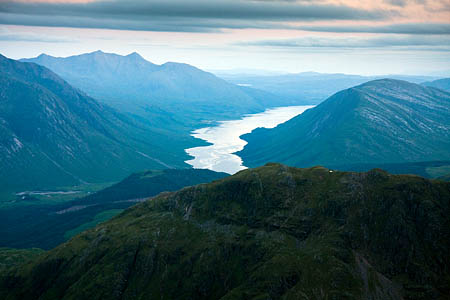A leading conservation charity has defended the production of a map which defines wild land in Scotland.
The John Muir Trust said the map is the most detailed, rigorous and sophisticated of its kind in the world, and much of the opposition to it comes from foreign-owned energy companies.
The trust is urging outdoor fans to make their views known during a Scottish Government consultation on the Core Wild Land 2013 Map, which could be used to protect large parts of Scotland from inappropriate development.
The consultation on the map, which was produced by Scottish Natural Heritage, ends on 20 December.
It sets out 43 areas of rugged, remote and challenging terrain, and has been criticised by a number of energy corporations, mainly from outside Scotland, and by some landowners.
But Stuart Brooks, chief executive of the John Muir Trust said: “We have had the map analysed by the leading international experts on wild land who say this is the most detailed, sophisticated and rigorous mapping of wild land to be carried out anywhere in the world.
“Now we have a world-class wild-land map to match our world-class wild landscapes. This marks a huge step forward towards protecting wild land from large scale commercial development, a goal which is supported by 75 per cent of Scots.”
Lochaber resident John Hutchison, chair of the trust, said: “The map is not about preventing small-scale development by local people. Nor is it about stopping communities from resettling land from which people were driven during the Clearances.
“It is about halting the wholesale destruction of wild land by global corporations. For centuries, the Highlands have been exploited by external forces for commercial gain.
“Today, most of those opposing the Core Wild Land Map are from outside Scotland and include American, German, French, Italian and UK multinational corporations.
“Most of their energy generation involves burning fossil fuels. Their mission is not to minimise greenhouse gases, but to maximise profits for distant shareholders.
“We would urge all those who value Scotland’s wild land to make your voice heard by responding to the consultation on the Scottish Government website.”
The John Muir Trust website has guidance on the consultation and a downloadable form for submissions.
The Core Wild Land Map defined areas Scottish Natural Heritage believed should be protected under new planning policies.
JMT said much of the criticism of the new policy and framework centred on the map.
It said: “Some opposed in principle the idea of mapping wild land, while others challenged the methodology of the map, including the definition of boundaries. As a result, the Scottish Government announced a further consultation, specifically focused on the Core Wild Land 2013 Map. That consultation will close on 20 December 2013.
“The John Muir Trust has had the map analysed by the world’s foremost experts on the geography of wild land, the Wildland Research Institute at the University of Leeds.”
The Scottish Parliament will start to take evidence on in the New Year, in preparation for the drafting of new planning legislation in spring 2014.
The trust said the Core Wild Land 2013 Map will be finalised during this period and will inform future planning decisions at local and national level relating to large-scale energy applications in the areas defined.

Margaret
04 December 2013Good idea for a fresh look at wild land.
The knockers should be aware that this is not the first survey to define wild land in Scotland. Back in 1962 W H Murray wrote a ground breaking report (probably similar areas to the JMT report) which had been commissioned by the National Trust for Scotland.
Better Future
06 December 2013Wild land can only be protected when we have independence and a government that can stand up to big business and land owners.
Mike Merchant
06 December 2013I'm glad that this survey has been done, and that it's being treated with some seriousness. But tying it in with the referendum is a rathole. Please correct me if this is wrong but: Scotland's access laws and community buyout laws were passed under unionist governments; and the present government has shown precious little enthusiasm for "standing up to big business and landonwers" as regards hilltracks and access deniers.